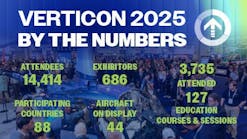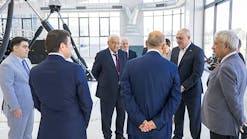What You Should Know About Types of Learners and Training Delivery Methods
It is well documented that a company’s most valuable asset is its people. Many companies' employment hiring practices make use of psychological testing to ensure the folks they hire are inherently talented for the roles they play. This is truly a great practice, but what about the folks who have been long-term employees and served in various roles within the company?
Consider this: any time an employee is given a new role, or department change it should be considered a “New Hire” situation from the perspective of orientation and familiarization with the expected policies and procedures for that new role and associated responsibility. For any employee new to their position, the next step is to train to company and department policies, procedures, and expectations. How do we do this, and even more importantly, do all learners learn by the same delivery method?
There are different types of learners who respond in various ways to particular training delivery methods. As a supervisor, you should become familiar with the characteristics of different types of learners, so you will be able to identify which particular training delivery method will prove most effective for your employee or group of employees. Doesn’t it make sense that a group of sales managers may not learn in the same way that a group of IT engineers might, and it would be different still for a group of A&P aircraft mechanics.
Classroom training can be an affordable easy way to train several staff members at the same time. But you need to consider carefully how the benefits of classroom training will mesh with the needs and learning styles of your staff. To do this, ask a cross-section of your trainees these questions.
• Do you prefer to interact with others while learning?
• Do you learn best by doing?
• Do you require a distraction-free learning environment?
• Do you need to be held accountable for your learning?
• Do you work best in a structured environment?
• Do you prefer to have immediate answers to questions and an opportunity to talk about training content?
If your sampling of trainees answered yes to most or all of these questions, classroom training may be the best method for your organization. All that remains is to find the most effective training classes.
On the job training
On the job training or OJT, is where an employee is instructed at the actual place of work, while he or she is doing the actual job for which they are being trained. A designated training supervisor usually performs the “hands-on” training or sometimes an experienced employee serves as the instructor. OJT provides a unique opportunity for participants who already possess some job-related skills and the knowledge to see how the tasks are to be performed at their new place of employment. The student should have a basic knowledge of the task or have prior experience in performing the task to which they are to be trained. Any training should be briefed before it begins to prepare the student and ensure an understanding of exactly what is intended to take place and any safety concerns. Personal safety and safety of other personnel, equipment, and property needs to be discussed. This is commonly termed a “tailgate safety briefing.”
Online training
Online training, sometimes referred to as virtual education, allows educational and technical information to be transferred separate from time, location, or space requirements. Online is a way to reduce travel costs and time in attendance at training meetings away from the facility. It provides flexibility as learning can be accomplished at each individual's own pace and time frame.
Different types of learners
Every person is different, and every person learns in a different way. The way one person learns may not be the way everyone learns. There are basically three different types of learners: the audible learner, the visual learner, and the kinesthetic learner.
Thirty percent of learners are audible learners and prefer to hear things. Your ears are your best sense, and seem to be connected directly with your brain, feeding it everything you hear. If a trainee is an audible learner, they are probably good at foreign languages, learn best in study groups, and read slowly. They may find it difficult to keep quiet for long periods of time, and tend to enjoy attention and interaction with others. The subjects audible learners find most difficult are ones that include lengthy reading assignments and having to write answers about that reading assignment. They may also find spelling hard, since they prefer to spell according to how their ear hears the word. They will remember things the easiest if they can hear them; they also will benefit greatly from group discussions.
Visual learners are those who learn things best through seeing them, on average 60 percent of the population are visual learners. Visual learning trainees like to keep an eye on the instructor and may prefer sitting in the front of the class and watching the lecture closely. Often, visual learners will find that a picture or a chart is very helpful in understanding explanations. The characteristics of a visual learner include:
• Individuals, who are good at spelling, but forget names.
• Trainees that need quiet study time alone.
• Some have to think awhile before understanding an example.
• They sometimes doodle and draw and dream in color.
• Understand and like pictures, charts, and drawings. They would also typically be good at sign language.
Also known as tactile learning, kinesthetic learning is a learning style which learning takes place by the student carrying out a physical activity, rather than listening to a lecture or watching a demonstration. People with a kinesthetic learning style are also commonly known as "do-ers." Tactile-kinesthetic learners make up only about 5 percent of the population. Kinesthetic learners typically learn best by doing. They are naturally good at physical activities like sports and outdoor activities. They enjoy learning through hands-on methods and typically like how-to guides and action-adventure stories. They might pace while on the phone or take breaks from studying to get up and move around. Some kinesthetic learners seem fidgety, and have a hard time sitting still in a class. Key methods for instructing kinesthetic learners include:
-
Go out and perform tasks after they have been given basic knowledge
-
Use task simulations or role play
-
Involve physical activity in training
-
Vary classroom and physical activity
All trainees need motivation to eagerly engage in training. To make your training program successful and develop employees who become valuable assets, find ways to have employees see the bigger picture, and how they can realize their own potential and enhance their career. Lastly, develop good communication and problem-solving skills. Solicit nonjudgmental feedback and consider it a gift, whether positive or negative. It will prove invaluable in the continual improvement of both your training program and ability to identify the type learners you will be training, as well as how to best deliver what they need.
DeborahAnn Cavalcante leads Diversified Aviation Consulting (DAC) and along with her associates has firsthand experience in air carrier operations, private charter aircraft, general aviation operations, military/civilian interface, FBO management, maintenance repair station training, safety training, human factors training, and customer service training. For more information on DAC visit www.dac.aero.





